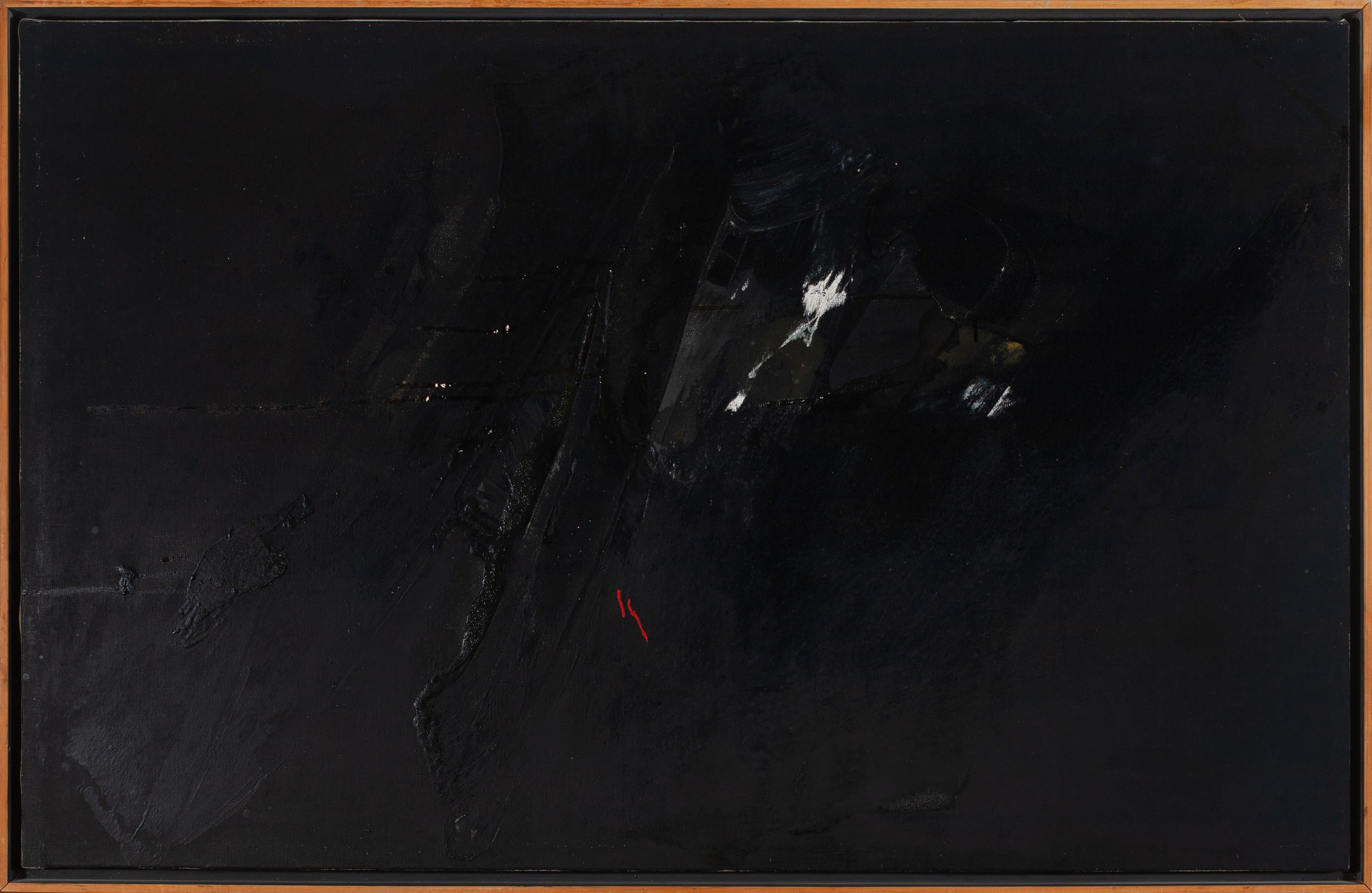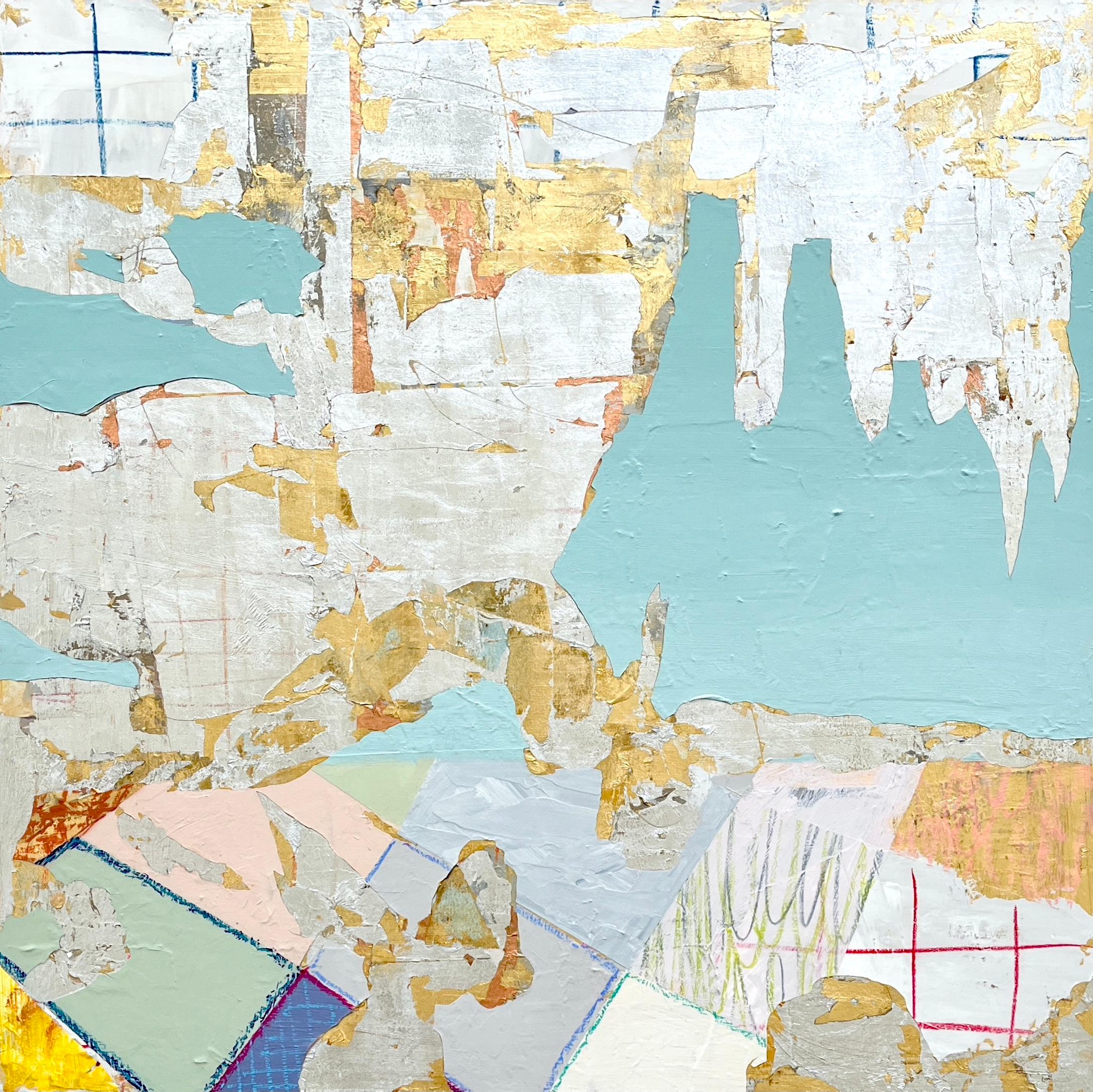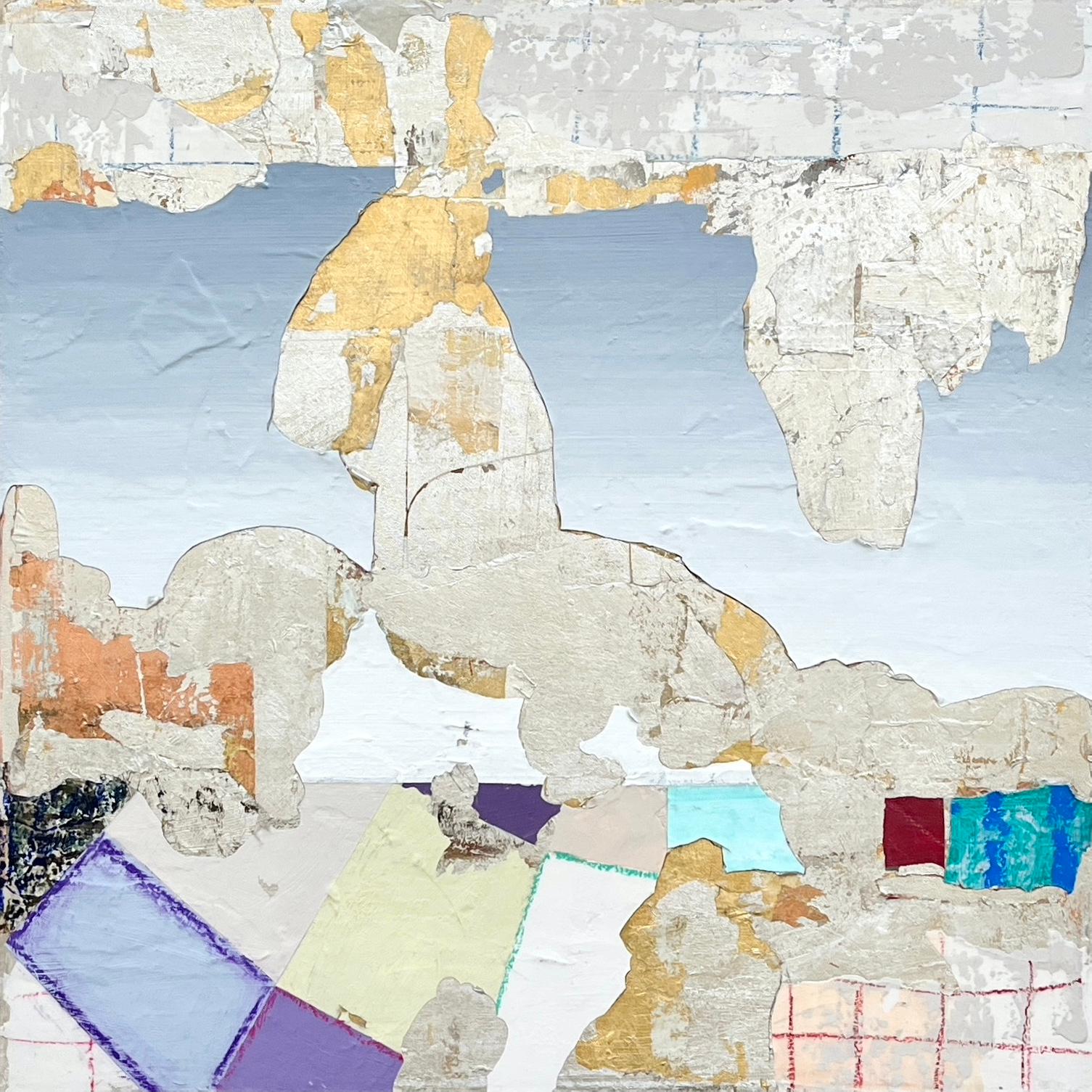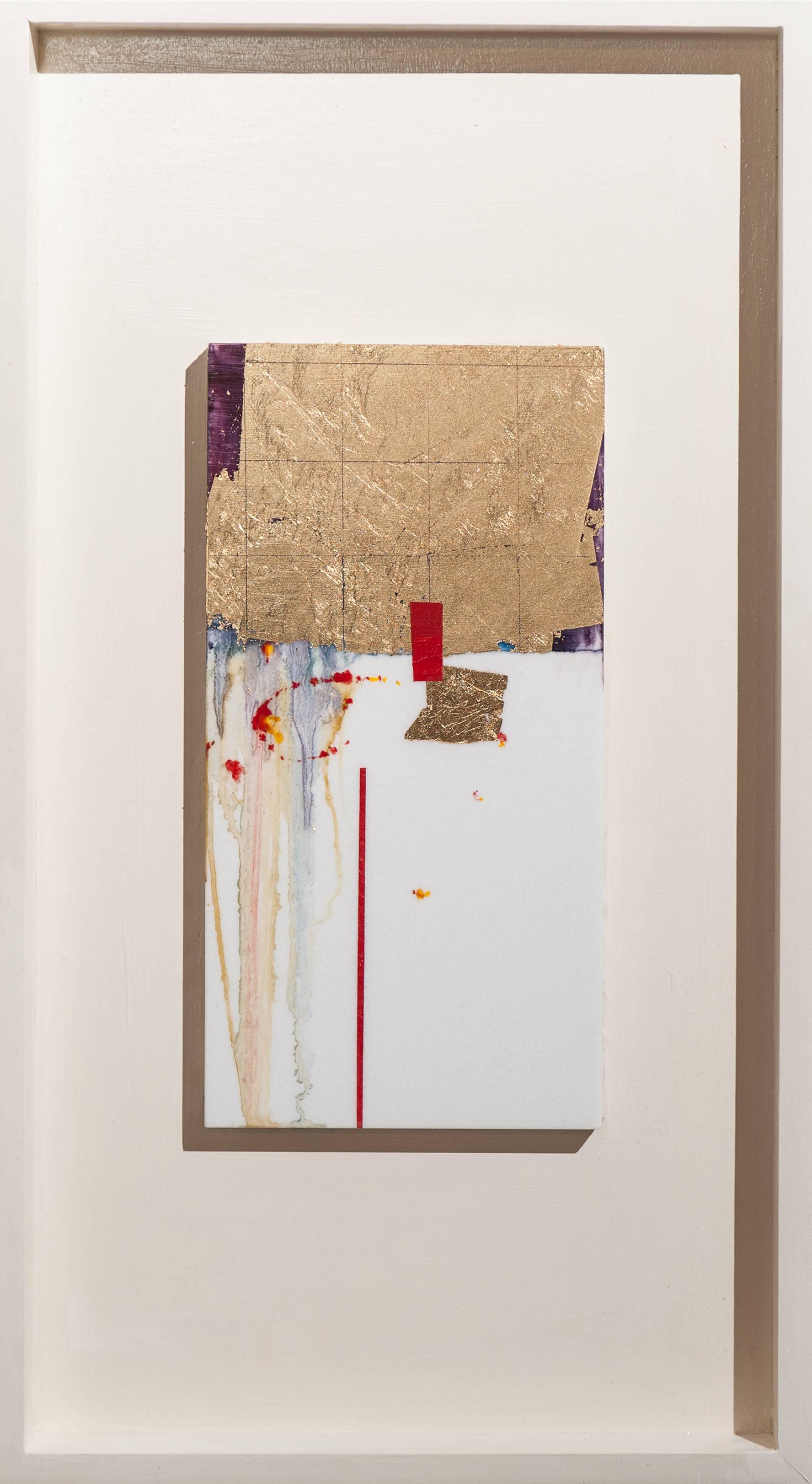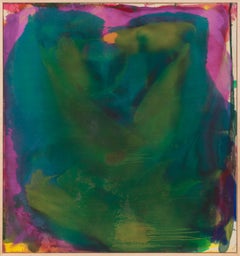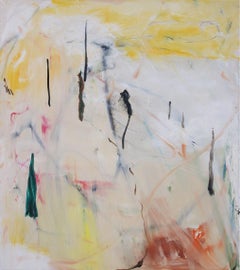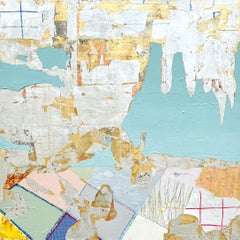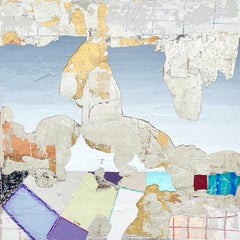Video Loading
Want more images or videos?
Request additional images or videos from the seller
1 of 8
Kikuo SaitoSpanish Ghost1987
1987
$70,000
£52,959.81
€61,123.83
CA$97,770.52
A$108,702.14
CHF 56,899.02
MX$1,333,195.79
NOK 724,468.38
SEK 683,984.01
DKK 456,126.05
Shipping
Retrieving quote...The 1stDibs Promise:
Authenticity Guarantee,
Money-Back Guarantee,
24-Hour Cancellation
About the Item
Waterline Fine Art, Austin, TX is pleased to present the following work:
Acrylic on canvas. Signed, dated, and titled verso.
52.25 x 52.75 in.
54 x 54.25 in. (framed)
Custom framed in a maple hardwood floater.
Provenance
Salander O’Reilly Galleries, New York
Private Collection, Connecticut
Provenance
Estate of Samuel Feinstein
McCormick Gallery, Chicago
Kikuo Saito was born in Tokyo in 1939, where he lived until young adulthood. At 22, while still in Japan, he apprenticed under a master painter, while remaining cognizant of the many new art movements emerging not only in Japan, but also across Europe and the United States. After a brief period working in lighting and stage design, Saito moved to New York in 1966 - a time when radical thinking and new modes of expression in both painting and performance had introduced an era of bold experimentation in the arts. In New York, he explored the free, expressive pouring and dragging of paint across canvas - techniques that would come to be associated with the Color Field movement. As Saito navigated the nascent waters of the Color Field and Abstract Expressionist schools, he soon found a vocabulary of his own in compositions of gestural brushstrokes, cryptic signs, letter forms, loose geometric shapes, and washes of color.
In those early New York years, Saito found a home at La MaMa Experimental Theatre Club where he designed sets, costumes, lighting, and props, while developing theater productions that blended qualities of the Japanese avant-garde with his own aesthetic. He went on to work with noted theater directors Robert Wilson and Jerome Robbins on productions both domestic and abroad. He took painting classes at the Art Students League, where he would later teach, and encountered the work of many of the era’s innovators. Soon he was working as a studio assistant for what would become some of the most prominent names to emerge from that era of American painting: Larry Poons, Kenneth Noland, and Helen Frankenthaler.
For many years, he worked back and forth between theater and painting. Eventually, he turned solely to his studio practice, devoting all of his time to a career with momentum that continues to grow even to this day.
Saito exhibited extensively over the decades, with his work having featured prominently in numerous solo and group shows worldwide. His paintings are in the permanent collections of the Museum of Modern Art, the Aldrich Museum, and numerous private and corporate collections. Even to this day, Saito’s work continues to be shown by many of the leading post-war and contemporary galleries in the United States.
Source: KinoSaito
- Creator:Kikuo Saito (1939, Japanese)
- Creation Year:1987
- Dimensions:Height: 52.25 in (132.72 cm)Width: 52.75 in (133.99 cm)
- Medium:
- Movement & Style:
- Period:
- Condition:Overall excellent and stable condition. Not examined under UV light.
- Gallery Location:Austin, TX
- Reference Number:1stDibs: LU2287212547472
Kikuo Saito
With ties to the Color Field tradition, Saito’s color landscapes are a richly infused exhibition of dragged and poured paint, often with bold flecks of color, animated calligraphic line, and stenciled lettering. Influenced by his work in theatre, many of his compositions are directly related to the movements and lights found on stage, as is the case with Crocodile Boogie. Japanese born and trained Kikuo Saito (1939–2016) moved to New York in 1966 where he worked as a carpenter while acting as studio assistant to Helen Frankenthaler, Kenneth Noland, and Larry Poons. Saito had long association with La MaMa Experimental Theatre Club in New York creating costumes, set design, and directing. His productions drew inspiration from traditional and avant-garde Japanese theatre. Saito's paintings and are in the permanent collections of the Museum of Modern Art, the Aldrich Contemporary Museums, and numerous private and corporate collections. KinoSaito, a non-profit museum and art space in Verplanck, New York, opened in 2020, in honor of Saito's interdisciplinary practice and spirit.
About the Seller
5.0
Vetted Professional Seller
Every seller passes strict standards for authenticity and reliability
Established in 2020
1stDibs seller since 2023
6 sales on 1stDibs
- ShippingRetrieving quote...Shipping from: Austin, TX
- Return Policy
Authenticity Guarantee
In the unlikely event there’s an issue with an item’s authenticity, contact us within 1 year for a full refund. DetailsMoney-Back Guarantee
If your item is not as described, is damaged in transit, or does not arrive, contact us within 7 days for a full refund. Details24-Hour Cancellation
You have a 24-hour grace period in which to reconsider your purchase, with no questions asked.Vetted Professional Sellers
Our world-class sellers must adhere to strict standards for service and quality, maintaining the integrity of our listings.Price-Match Guarantee
If you find that a seller listed the same item for a lower price elsewhere, we’ll match it.Trusted Global Delivery
Our best-in-class carrier network provides specialized shipping options worldwide, including custom delivery.More From This Seller
View AllUntitled
Located in Austin, TX
Waterline Fine Art, Austin, TX is pleased to present the following work:
Oil on canvas.
63 x 59 in.
64.5 x 60.5 in. (framed)
Custom framed in a s...
Category
Early 2000s Abstract Abstract Paintings
Materials
Canvas, Oil
Untitled
Located in Austin, TX
Oil on linen. Unsigned.
58.25 x 46.75 in.
59.75 x 48 in. (framed)
Custom framed in a solid maple floater with a polyurethane clear coat finish.
Provenance
Estate of Gottfried Mair...
Category
1970s Abstract Abstract Paintings
Materials
Canvas, Raw Linen, Oil
Untitled
By Tom Goldenberg
Located in Austin, TX
Waterline Fine Art, Austin, TX is pleased to present the following work:
Oil on canvas (diptych). Signed and dated verso.
68.25 x 32.25 in.
69.75 x 33.5. (framed)
Custom framed in...
Category
1980s Post-War Abstract Paintings
Materials
Canvas, Oil
$24,000
According to Equation
Located in Austin, TX
Waterline Fine Art, Austin, TX is pleased to present the following work:
Oil on canvas. Signed, titled, dated verso.
67 x 66 inches67.75 x 66.75 inches (framed)
Custom framed in a solid maple floater.
Warren Rohrer...
Category
1980s Abstract Abstract Paintings
Materials
Canvas, Oil
Argo
By Jacob Kainen
Located in Austin, TX
Waterline Fine Art, Austin, TX is pleased to present the following work:
Oil on canvas. Signed lower right; signed, dated, titled verso (underneath foamcore backing).
49.75 x 59.75...
Category
1990s Abstract Abstract Paintings
Materials
Canvas, Oil
$48,000
Crawling Landscape
Located in Austin, TX
Waterline Fine Art, Austin, TX is pleased to present the following work:
Oil on canvas. Signed lower right; signed, titled, dated along rear stretcher.
48.25 x 52.25 in.
49.5 x 53.5 in. (framed)
Custom framed in a solid maple floater, painted a light gray.
Provenance
Marian Locks Gallery, Philadelphia
Exhibited
1996 - Locks Gallery, Philadelphia (Warren Rohrer...
Category
1970s Abstract Abstract Paintings
Materials
Canvas, Oil
You May Also Like
Untitled 2005-43
Located in New York, NY
Acrylic on canvas
53.10 x 47.20 in
unstretched
Category
2010s Abstract Paintings
Materials
Oil
65-D-2
By Masatoyo Kishi
Located in Columbia, MO
Oil on canvas
Signed verso
Category
1990s Abstract Abstract Paintings
Materials
Canvas, Oil
Untitled No. 64
By Takefumi Hori
Located in Westport, CT
This beautiful painting is by Japanese artist, Takefumi Hori. He was born in Tokyo, Japan. He paints beautiful gold leaf paintings. This piece is acrylic, gold leaf and metal leaf ...
Category
2010s Contemporary Abstract Paintings
Materials
Silver, Gold Leaf
Untitled No. 55
By Takefumi Hori
Located in Westport, CT
This beautiful painting is by Japanese artist, Takefumi Hori. He was born in Tokyo, Japan. He paints beautiful gold leaf paintings. This piece is acrylic, gold leaf and metal leaf ...
Category
2010s Contemporary Abstract Paintings
Materials
Silver, Gold Leaf
From the Depth
By Shingo Francis
Located in Santa Monica, CA
These daily drawings are a meditation on the moment as a process to make space for the current pandemic on a personal and collective experience.
Category
2010s Abstract Abstract Paintings
Materials
Paper, Gouache
#5295
By Hiro Yokose
Located in Phoenix, AZ
oil and gold leaf on porcelain tile
Neoromantic painter Hiro Yokose fuses multiple layers of wax and oil paint to create mysterious, veiled landscapes illuminated with flashes of li...
Category
2010s Abstract Abstract Paintings
Materials
Gold, Gold Leaf
$3,000
More Ways To Browse
Spanish Costume
Used Theater Props
Kenneth Young
Larry Roberts Chicago
Helen Post
La Wilson
Vintage Austin Productions
Saito Kikuo
Jerome Robbins
Vintage Stage Props
Austin Production 1980
L Pink Art
Lower East Side
Hare Oil
Martin Young
Oklahoma Artists Paintings
Acrylic Painting Gold Background
Iridescent Paintings

